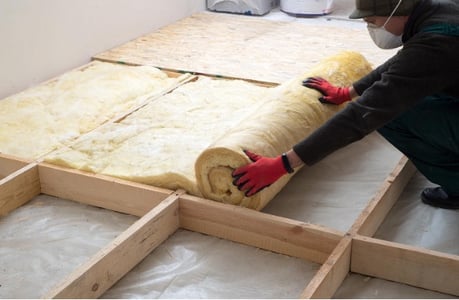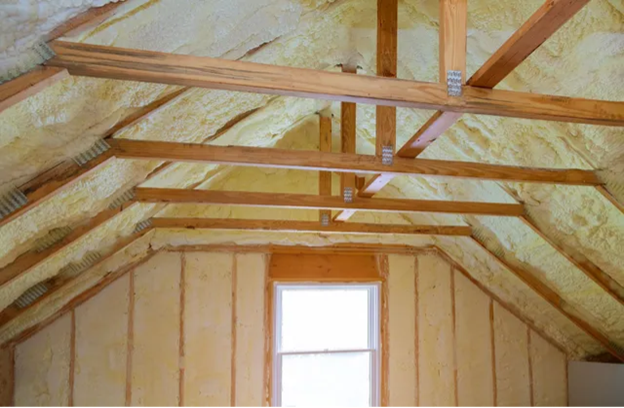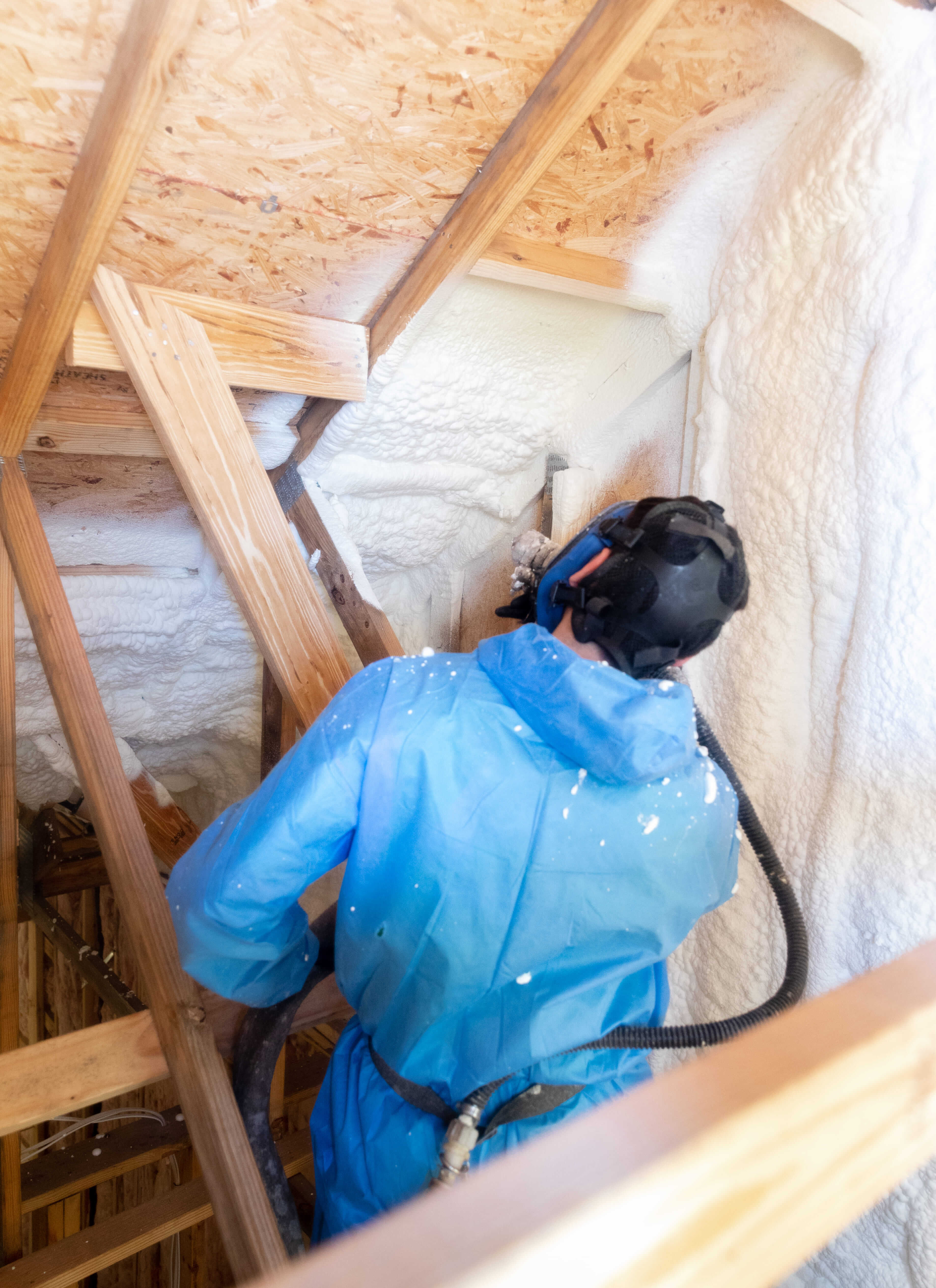
There are plenty of sources of noise inside and outside of the home that impact overall well-being. Many homeowners turn to insulation as soundproofing to mitigate the sound of traffic, construction, lawn equipment, sirens, and other noise that disrupts peace and quiet.
Discover which noise-cancelling insulation materials deliver the best results for your application.
How Does Insulation Help with Sound?
Insulation reduces sound in two ways, and it’s important to understand the different types of sound before choosing a sound-absorbing insulation for your home.
- Sound absorption: Sound travels in waves that tend to bounce off hard surfaces. When these waves hit a softer material, they’re absorbed rather than reflected, which reduces the bouncing, echoing effect that causes ambient noise.
- Noise-reducing panels, fabric wall hangings, and carpeted flooring are all examples of products that absorb sound effectively.
- Sound blocking: Denser, thicker insulation just doesn’t absorb sound waves; it blocks them. Blocking sound is particularly important for quieting impact sound like footsteps or the loud hum of running appliances.
How to Choose the Best Acoustic Insulation Material
Implementing sound insulation materials to reduce noise inside and outside your home depends on a few key factors, including placement and the type of insulation.
- Insulation density: The denser the insulation, the more sound it will block.
- Installation: Insulation must fill in the entire cavity, with no gaps. Not unlike air, sound travels easily through small gaps and openings.
- Type of noise: Some insulation materials are better suited for specific types of noise. Fiberglass batt and mineral wool are ideal for absorbing sound within a room, while denser spray foam is better suited for blocking sound between rooms or from outside.
- Wall construction: The thickness and composition of the wall, ceiling, or floor also make a difference. Thinner drywall and hard flooring absorb less sound and may contribute to ambient noise.
The Best Insulation to Reduce Noise, by Application
Every insulation product has its own advantages and disadvantages, and any material will quiet ambient noise. Some are better suited to specific applications, and many aren’t realistic options for existing homes due to the invasive nature of their installation.
Soundproofing Walls
The best insulation for soundproofing walls is closed-cell spray foam, thanks to its high-density composition. Because it’s also a superior moisture barrier compared to less-dense open-cell spray foam, closed-cell is the go-to choice for exterior walls.
Fiberglass and mineral wool (also known as rockwool) are affordable alternatives for interior wall soundproofing. Soft and porous, both materials are effective at absorbing high-frequency sounds through walls and ceilings.
Soundproofing Floors and Ceilings
Adding insulation to soundproof your ground floor or between floors in multilevel homes presents two different challenges.
Ground Floor Insulation
In addition to noise, your ground floor is susceptible to heat transfer from your basement, crawl space, or the ground itself. The best insulation depends on your home’s subflooring:
- Suspended timber: With wood subflooring, insulation is added between flooring joists, not unlike how it’s fitted between wooden studs in most walls. Mineral wool (rockwool), fiberglass batts, and some types of rigid foam board insulation offer the right mix of R-value and sound absorption.
- Concrete slabs: Concrete floors are in direct contact with the home’s foundation, which means there isn’t enough space to install batt, mineral wool, or cellulose insulation without compressing the material. Instead, home builders use rigid foam boards, extruded polystyrene (XPS), and similar materials to create an effective thermal barrier between the concrete and the finished flooring.
These are all excellent options for reducing noise from footsteps, though the finishing flooring material makes a difference; if sound is a concern, opt for carpeting or add plenty of area rugs to hardwood, vinyl, and laminate floors.
Soundproofing between floors is usually easier to add to existing homes, especially if completed while replacing flooring. Mineral wool (rockwool) is the best insulation to reduce noise between floors, and there are several mineral wool products designed specifically to maximize sound absorption.
How Much Does Sound Insulation Cost?
Like all types of insulation, soundproofing materials are sold by the square foot. The cost to soundproof your walls or ceiling varies widely based on the amount of material required, the type of material, and the complexity of installation.
In many cases, it’s much less expensive to add insulation during a planned remodel or when replacing existing flooring. Your local Koala Insulation will provide a free estimate during our initial assessment!
Other Ways to Soundproof Your Home
Insulation is the most effective way to quiet indoor and outdoor noise, but there are other accessible ways to enhance your home’s peace and quiet.
- Reduce outside noise by sealing gaps and weather-stripping windows and doors.
- Add rugs and carpet to high-traffic areas of the home; look for rugs with thick padding to maximize their effect.
- Hang acoustic panels in rooms with high ceilings or where volume levels are high, such as a home theater, living room, or your home office.
Peace, Quiet, and Efficiency with Koala Insulation
Enjoy new levels of calm with the best acoustical insulation to suit your unique needs. As North America’s leading residential insulation contractor, we bring national resources and local expertise to every project, helping you achieve excellent soundproofing and energy efficiency.
Start your project by finding your local insulation contractor today!
Find Your Location


Get a quote






